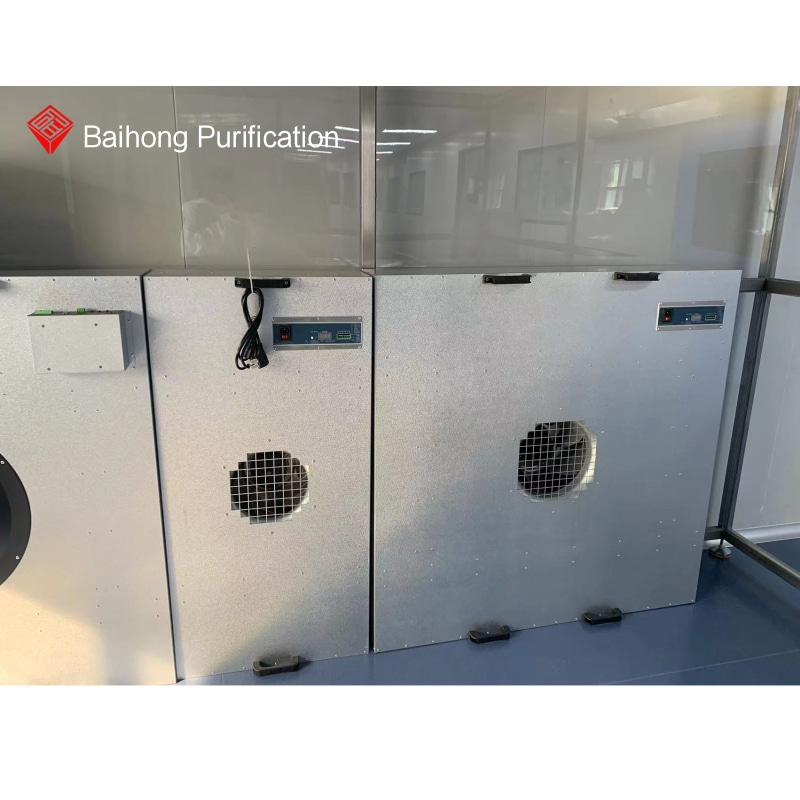Hello everyone, this is Baihong Purification. In the field of clean rooms and air purification, FFU (Fan Filter Unit) is the core equipment, and its performance and standards directly affect air quality and factory environment. With the increasing demand in the industry, more and more users are paying attention to the technical specifications and filtering level standards of FFU. This article will systematically analyze the core parameters, material design, performance characteristics, and filtering level classification of FFU, helping you comprehensively understand the technical requirements of FFU.
1、 Standard specification for Fan Filter Unit
(1)Size and specifications
The size design of FFU needs to be adapted to clean rooms, and common standard sizes include:
575×575×320mm
1175×575×320mm
1175×875×320mm
1175×1175×320mm
In addition, it supports non-standard customization, such as duct interfaces, to meet the needs of different scenarios.
(2)Material and structural design
Box material: Made of aluminum zinc coated plate (rust proof, corrosion-resistant, lightweight) or stainless steel.
Ultra thin design: The body thickness is only 23cm, with a total thickness of ≤ 30cm including high-efficiency filters, saving space and facilitating installation and maintenance.
Humanized design: Stainless steel handles are standard, and some models can be equipped with damping baffles to ensure uniform air flow.
(3)Performance and Energy Efficiency
Wind speed uniformity: Ensure stable airflow.
Low noise operation: suitable for environments with high requirements for quietness.
Long life motor: energy-saving and efficient.
Intelligent control: supports speed regulation, optional centralized control.
2、Fan Filter Unit filtration grade standard

(1)Primary filter layer (pre filter)
As the first barrier of the filtration system, this level is specifically designed to intercept larger particles in the air, including dust, suspended solids, and certain specific metal particles (such as beryllium). Its additional function is to protect subsequent filtering components from large particle contamination.
(2) Activated carbon adsorption layer
The main function of this filter layer is to effectively eliminate odors, smoke, and volatile organic compounds (including formaldehyde, benzene derivatives, and carbon monoxide) from gaseous pollutants through physical adsorption. The filtration efficiency is positively correlated with the quality parameters of activated carbon materials.
(3) HEPA high-efficiency filter layer
Made of precision woven ultra-fine fiber materials, this filter layer has a retention efficiency of 99.97% for 0.3 micron particles in the air, effectively removing more than 70 types of microbial pollutants such as bacteria and viruses. According to the EU standard EN1822, its performance levels are divided into:
G1-G4 levels (initial effect)
F5-F9 levels (medium efficiency)
H10-H14 level (high-efficiency HEPA)
U15-U17 levels (ultra efficient ULPA)
In the field of air purification, grades H13-H14 are recognized as the optimal performance level.
The standards and filtration levels of FFU directly affect its application effectiveness, and users need to consider factors such as air volume requirements, cleanliness level, noise control, and energy consumption when choosing. With the development of technology, intelligent and low-energy FFUs will become the future trend. This is Baihong Purification. If you need more detailed technical support, please feel free to consult us.

